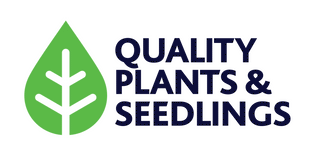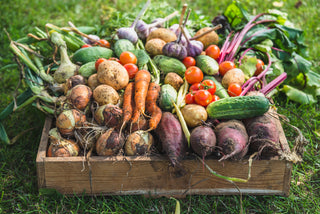Weather conditions play an essential role in shaping how growers manage their crops. From sunlight and temperature to rainfall and wind, each element of weather influences plant health, disease management, and overall yield. In this expanded blog, we’ll not only cover how weather affects nutrient absorption and growth but also how it can drive the spread of pests and diseases, creating challenges for growers in both farms and nurseries.
Table: Key Weather Elements and Their Impact on Growing Patterns, Pests, and Diseases
| Weather Condition | Effect on Plants | Grower Response | Examples |
|---|---|---|---|
| Sunlight (High) | Increased photosynthesis; rapid growth; potential heat stress | Increase watering and nutrient supply, use shade | High summer sun boosts the growth of tomatoes but risks leaf scorch in lettuce. |
| Sunlight (Low) | Reduced growth; potential for fungal diseases due to dampness | Supplemental lighting, improved air circulation | Low light and humidity encourage powdery mildew in cucumbers. |
| Rainfall (High) | Waterlogged roots; potential fungal and bacterial diseases | Improve drainage, reduce irrigation, apply fungicides | High rainfall increases the risk of root rot in beans and tomatoes. |
| Rainfall (Low) | Drought stress; reduced nutrient uptake, encourages pests seeking moisture | Install irrigation, apply mulch to retain moisture | Aphids invade drought-stressed crops like spinach and zucchini. |
| Temperature (High) | Heat stress, reduced fruit setting, faster evaporation; insect and pathogen proliferation | Shade cloth, adjust planting times, pest scouting | Hot weather speeds up spider mite infestations on strawberries. |
| Temperature (Low) | Frost damage; slowed growth; potential death of tender plants; promotes fungal diseases | Frost covers, heat mats, adjust planting schedules | Frost kills frost-sensitive plants like basil, while cold, damp weather favours mildew in peas. |
| Wind | Physical damage to plants; increased water loss; pathogen spread | Windbreaks, increase irrigation, fungicide application | High winds spread fungal spores, causing rust in wheat crops. |
| Lightning Storms | Nitrogen fixation in the soil; can drive pests to neighbouring crops | Use lightning protection, monitor pest migration | Lightning helps soil nitrogen but strong storms push pests into lettuce crops from surrounding fields. |
| Frost | Ice formation damages plant cells; favours certain pathogens | Frost covers, delay planting sensitive crops | Frost kills young vegetable seedlings but favours late blight in potatoes. |
Weather’s Role in Spreading Pests and Diseases
1. Wind: The Hidden Vector for Pathogens
While wind may seem like a harmless factor in weather, it plays a significant role in spreading plant pathogens. Fungal spores, bacteria, and even insect pests can be carried by the wind over large distances, infecting healthy crops far from the source. For example, rust, powdery mildew, and downy mildew spores can all travel miles in a gust of wind, infecting wheat, grapevines, or vegetable crops in neighbouring fields or nurseries. Growers in regions prone to high winds often invest in windbreaks to limit crop exposure and apply preventive fungicides during high-risk periods.
In nursery settings, the wind can introduce airborne pathogens, especially in densely planted areas, spreading diseases quickly among vulnerable seedlings. Windbreaks, careful plant spacing, and increased monitoring are critical to minimizing these risks.
2. Rainfall: Creating Conditions for Fungal Growth
Excessive rainfall can create perfect conditions for fungal and bacterial diseases to thrive. Crops such as tomatoes, beans, and leafy greens are particularly vulnerable to root rot and other waterborne diseases when soil becomes oversaturated. Rain splashes soil-borne pathogens onto lower plant leaves, spreading diseases like early blight in tomatoes and bacterial leaf spot in lettuce. In nursery environments, this becomes even more concerning as seedlings are sensitive and more prone to damping-off diseases.
Growers often install effective drainage systems to avoid waterlogging and apply fungicides or bacterial treatments after heavy rains to prevent disease spread.
Example: Pathogens and Pests Moving with Harvests
During the harvesting process, crops are often disturbed, releasing pests and pathogens that can migrate to other nearby crops. For instance, when brassicas like broccoli or cabbage are harvested, pests such as aphids, cabbage loopers, and thrips are displaced and seek new food sources. These pests can move into neighbouring fields or nurseries, causing new infestations.
Similarly, diseases can be spread through harvesting equipment that hasn’t been properly sterilized between fields, transferring pathogens like clubroot from infected fields to clean ones. Growers must be mindful of these risks, ensuring that all equipment is cleaned, and regularly scouting surrounding crops after large harvests.
Wind and Harvests: A Combined Risk Factor
When crops are cut or harvested, exposed soil is more vulnerable to wind erosion. This doesn’t just carry soil particles, but also seeds from weeds and spores from pathogens, potentially contaminating nearby fields. After harvest, especially in dry, windy conditions, loose soil can create dust storms that carry plant diseases like Fusarium wilt or Verticillium wilt, which can take hold in new fields.
In nurseries, after crops or plants are moved, diseases like downy mildew can be spread quickly, particularly when plants are kept close together, making post-harvest hygiene and spacing crucial to disease management.
How Growers Adapt to Seasonal Changes and Weather-Driven Threats
Preventing Disease Spread After Harvest
To minimize the spread of diseases and pests after harvest, growers often:
- Sterilize equipment: Cleaning and sterilizing equipment between fields reduces the risk of cross-contamination.
- Scout neighbouring fields: After major harvests, increased scouting helps detect new pest or disease outbreaks early.
- Use cover crops: Planting cover crops after harvest reduces wind erosion and limits the movement of pathogens through soil.
Adapting to Wind and Lightning Storms
High winds and storms can lead to crop damage and pest migration. Growers can reduce risk by:
- Installing windbreaks: Natural or artificial windbreaks protect crops and reduce windborne disease spread.
- Monitoring pest migration: After storms, growers monitor crops more closely for newly arrived pests like aphids, spider mites, or thrips.
- Using integrated pest management (IPM): IPM strategies such as releasing beneficial insects (ladybugs or predatory mites) can help control pest populations driven into fields or nurseries by wind.
Water Management for Disease Control
To counter heavy rainfall and the risk of disease:
- Improving soil drainage: Raised beds or tilled soil can help prevent waterlogging and reduce fungal disease pressure.
- Reducing splashback: Mulching helps to prevent soil from splashing onto leaves, minimizing the spread of soil-borne diseases.
- Applying preventive treatments: Fungicides and biofungicides are often applied after heavy rain to protect plants from damp-related diseases.
Conclusion: How Growers Can Stay One Step Ahead of the Weather
Understanding how weather conditions influence grower patterns is key to staying one step ahead of the challenges posed by nature. From preparing for wind-driven pathogens to preventing diseases after harvest, successful growers adapt to their environment by carefully monitoring weather patterns and adjusting their crop management strategies accordingly.
By applying best practices, such as using windbreaks, improving soil drainage, and scouting for pests after storms and harvests, growers can minimize the impact of adverse weather conditions and ensure the long-term health of their crops. Whether you’re growing at a large commercial scale or in a nursery setting, weather will always be a crucial factor in the health of your plants.




